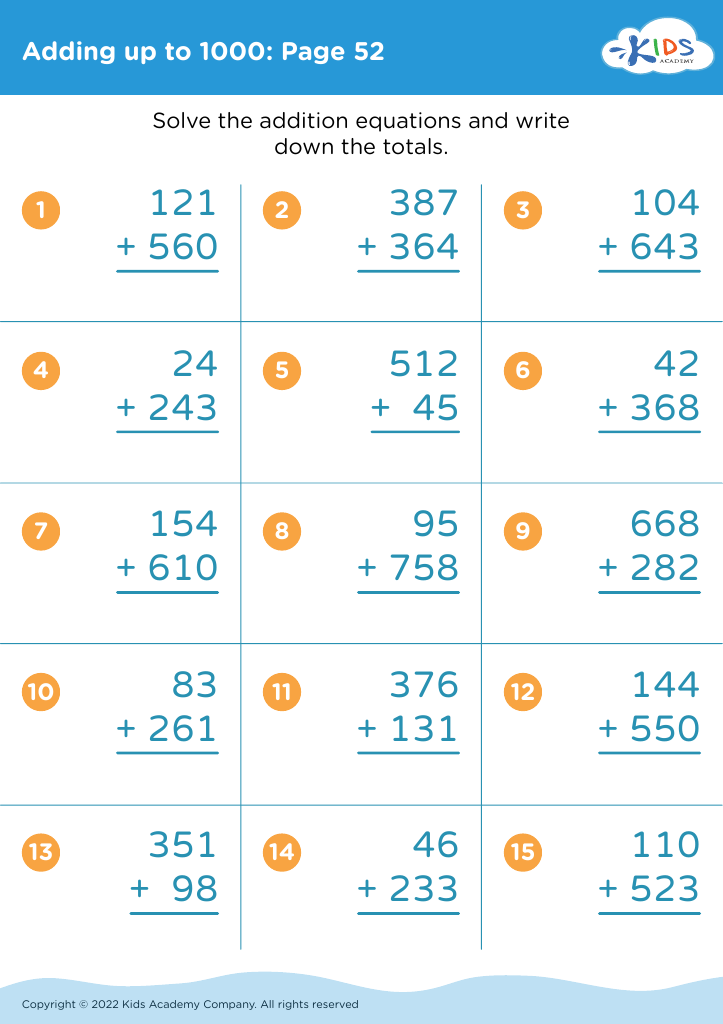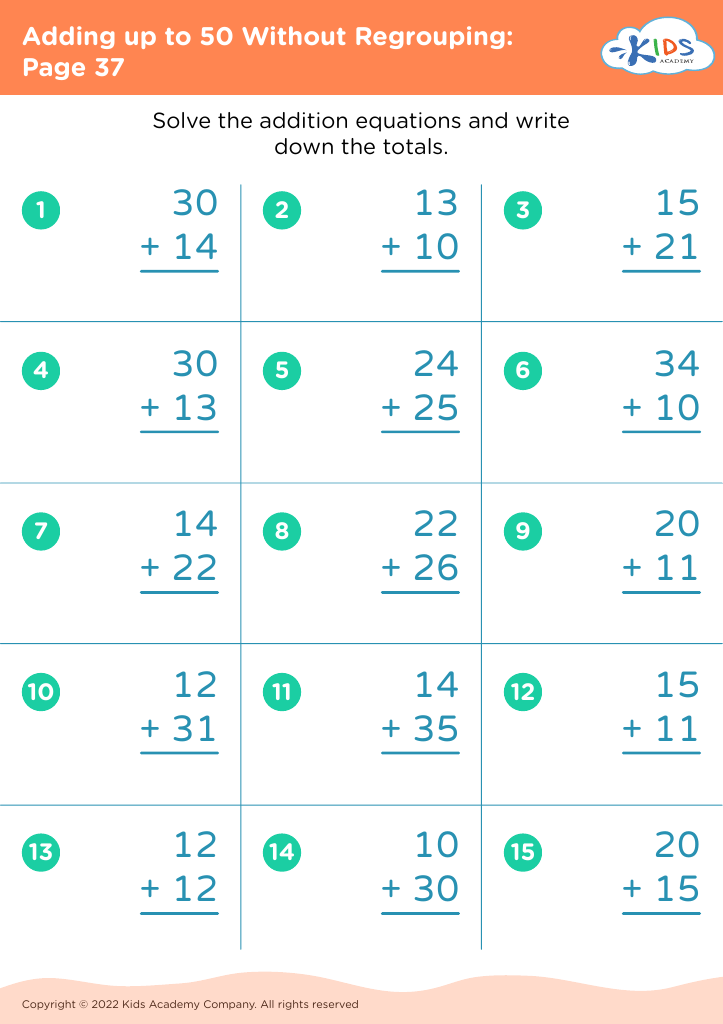Recognize equivalent fractions Worksheets for Kids
2 filtered results
-
From - To
Question/Answer
How to train the Recognize equivalent fractions skill in Grade 2 students learning about Adding up to 50 Without Regrouping?
To train Grade 2 students in recognizing equivalent fractions while learning addition up to 50 without regrouping, start with visual aids like pie charts or fraction bars to illustrate simple fractions and their equivalents (e. g. , 1/2 = 2/4).
What does the Recognize equivalent fractions skill mean when it comes to Grade 2 Adding up to 50 Without Regrouping learning?
The "Recognize equivalent fractions" skill in the context of Grade 2 Adding up to 50 Without Regrouping means that students learn to identify fractions that represent the same value, even though they have different numerators and denominators.
How does the mastery of the Recognize equivalent fractions skill affect a student's performance at an early age?
Mastery of the Recognize Equivalent Fractions skill at an early age significantly boosts a student's mathematical foundation. It enhances their understanding of number relationships and proportionality, which are critical for advanced math topics. This skill also improves their problem-solving abilities, mathematical reasoning, and confidence in handling more complex mathematical operations, contributing positively to their overall academic performance.













